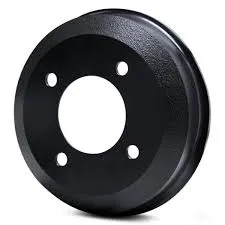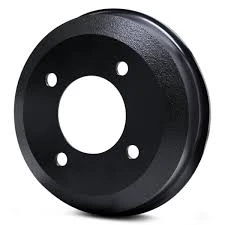
-
 Afrikaans
Afrikaans -
 Albanian
Albanian -
 Amharic
Amharic -
 Arabic
Arabic -
 Armenian
Armenian -
 Azerbaijani
Azerbaijani -
 Basque
Basque -
 Belarusian
Belarusian -
 Bengali
Bengali -
 Bosnian
Bosnian -
 Bulgarian
Bulgarian -
 Catalan
Catalan -
 Cebuano
Cebuano -
 Corsican
Corsican -
 Croatian
Croatian -
 Czech
Czech -
 Danish
Danish -
 Dutch
Dutch -
 English
English -
 Esperanto
Esperanto -
 Estonian
Estonian -
 Finnish
Finnish -
 French
French -
 Frisian
Frisian -
 Galician
Galician -
 Georgian
Georgian -
 German
German -
 Greek
Greek -
 Gujarati
Gujarati -
 Haitian Creole
Haitian Creole -
 hausa
hausa -
 hawaiian
hawaiian -
 Hebrew
Hebrew -
 Hindi
Hindi -
 Miao
Miao -
 Hungarian
Hungarian -
 Icelandic
Icelandic -
 igbo
igbo -
 Indonesian
Indonesian -
 irish
irish -
 Italian
Italian -
 Japanese
Japanese -
 Javanese
Javanese -
 Kannada
Kannada -
 kazakh
kazakh -
 Khmer
Khmer -
 Rwandese
Rwandese -
 Korean
Korean -
 Kurdish
Kurdish -
 Kyrgyz
Kyrgyz -
 Lao
Lao -
 Latin
Latin -
 Latvian
Latvian -
 Lithuanian
Lithuanian -
 Luxembourgish
Luxembourgish -
 Macedonian
Macedonian -
 Malgashi
Malgashi -
 Malay
Malay -
 Malayalam
Malayalam -
 Maltese
Maltese -
 Maori
Maori -
 Marathi
Marathi -
 Mongolian
Mongolian -
 Myanmar
Myanmar -
 Nepali
Nepali -
 Norwegian
Norwegian -
 Norwegian
Norwegian -
 Occitan
Occitan -
 Pashto
Pashto -
 Persian
Persian -
 Polish
Polish -
 Portuguese
Portuguese -
 Punjabi
Punjabi -
 Romanian
Romanian -
 Russian
Russian -
 Samoan
Samoan -
 Scottish Gaelic
Scottish Gaelic -
 Serbian
Serbian -
 Sesotho
Sesotho -
 Shona
Shona -
 Sindhi
Sindhi -
 Sinhala
Sinhala -
 Slovak
Slovak -
 Slovenian
Slovenian -
 Somali
Somali -
 Spanish
Spanish -
 Sundanese
Sundanese -
 Swahili
Swahili -
 Swedish
Swedish -
 Tagalog
Tagalog -
 Tajik
Tajik -
 Tamil
Tamil -
 Tatar
Tatar -
 Telugu
Telugu -
 Thai
Thai -
 Turkish
Turkish -
 Turkmen
Turkmen -
 Ukrainian
Ukrainian -
 Urdu
Urdu -
 Uighur
Uighur -
 Uzbek
Uzbek -
 Vietnamese
Vietnamese -
 Welsh
Welsh -
 Bantu
Bantu -
 Yiddish
Yiddish -
 Yoruba
Yoruba -
 Zulu
Zulu
Jan . 20, 2025 14:08
Back to list
compare disc brake and drum brake
When navigating the terrain of braking systems, choosing between disc brakes and drum brakes is crucial for vehicle performance and safety. Both systems have unique characteristics that merit consideration, depending on usage, climate, and vehicle type. Understanding their differences can help make an informed decision.
From an authoritative standpoint, regulatory guidelines in certain regions are increasingly favoring disc brakes due to their active role in advanced driver-assistance systems (ADAS). Disc brakes' capability of integrating with electronic control systems enhances automated braking precision, a compelling reason for manufacturers to include them as standard in newer models. Such integration is vital as we move toward autonomous vehicles. Trust in either system should be based on vehicle purpose and usage scenarios. For passenger cars that demand reliable performance across various terrains and weather, disc brakes stand out. Meanwhile, for larger vehicles, like trucks and trailers, drum brakes may offer superior performance and value, given their ability to provide greater force over larger surface areas. Each braking system's potential impact on fuel economy and emissions can also influence decisions, as disc brakes are generally lighter, contributing to improved overall vehicle efficiency. In sum, choosing between disc and drum brakes boils down to specific needs and situational demands. Whether prioritizing cost, maintenance, or performance, understanding each system's strengths through expert knowledge ensures driving satisfaction and safety.


From an authoritative standpoint, regulatory guidelines in certain regions are increasingly favoring disc brakes due to their active role in advanced driver-assistance systems (ADAS). Disc brakes' capability of integrating with electronic control systems enhances automated braking precision, a compelling reason for manufacturers to include them as standard in newer models. Such integration is vital as we move toward autonomous vehicles. Trust in either system should be based on vehicle purpose and usage scenarios. For passenger cars that demand reliable performance across various terrains and weather, disc brakes stand out. Meanwhile, for larger vehicles, like trucks and trailers, drum brakes may offer superior performance and value, given their ability to provide greater force over larger surface areas. Each braking system's potential impact on fuel economy and emissions can also influence decisions, as disc brakes are generally lighter, contributing to improved overall vehicle efficiency. In sum, choosing between disc and drum brakes boils down to specific needs and situational demands. Whether prioritizing cost, maintenance, or performance, understanding each system's strengths through expert knowledge ensures driving satisfaction and safety.
Latest news
-
What Are Drum BrakesNewsJul.07,2025
-
Understanding Brake Drum MaterialNewsJul.07,2025
-
Semi-Trailer Brake Drum: A Key Component for Extreme Loads and Long-Distance TransportNewsJul.07,2025
-
Drum Brake Pads for SaleNewsJul.07,2025
-
Brake Drums for SaleNewsJul.07,2025
-
Brake Drum ManufacturerNewsJul.07,2025
-
Aluminum Brake Drums: The Future of High-Performance CarsNewsJul.07,2025
